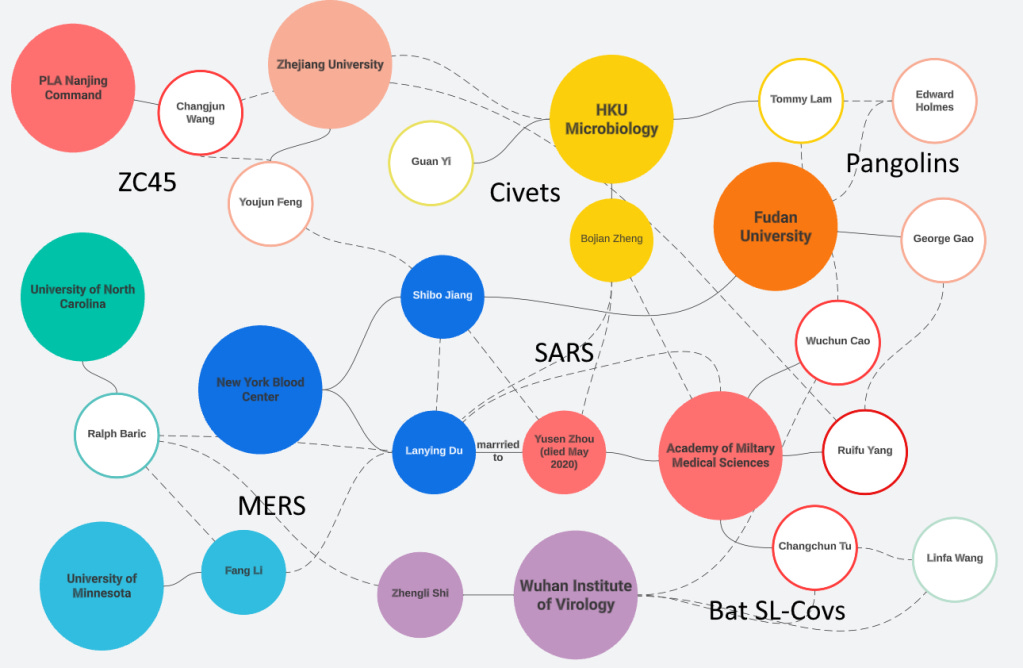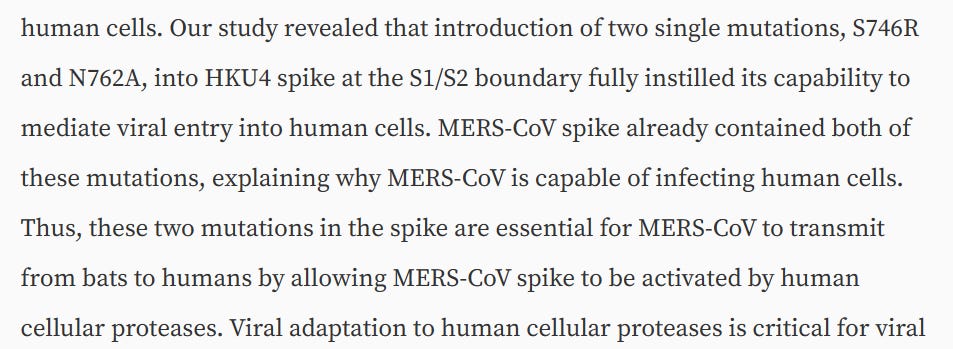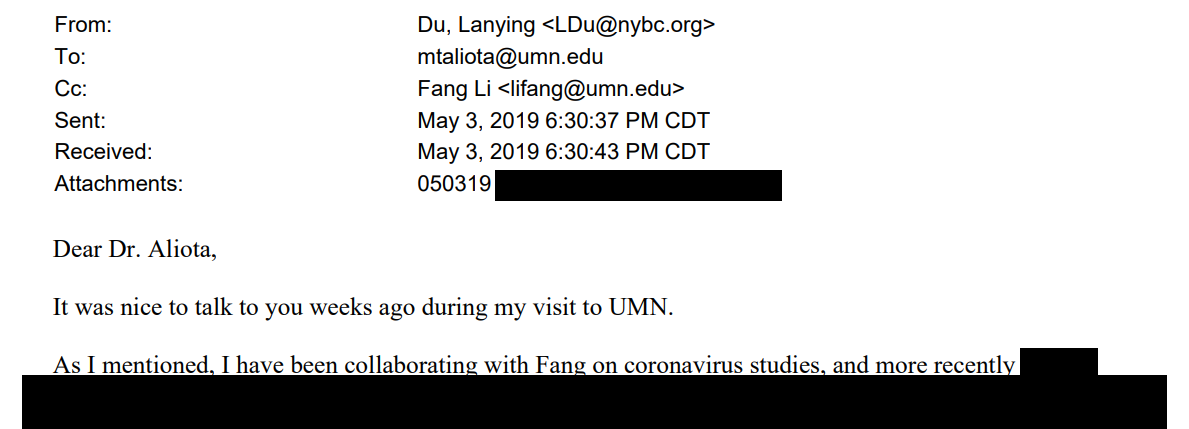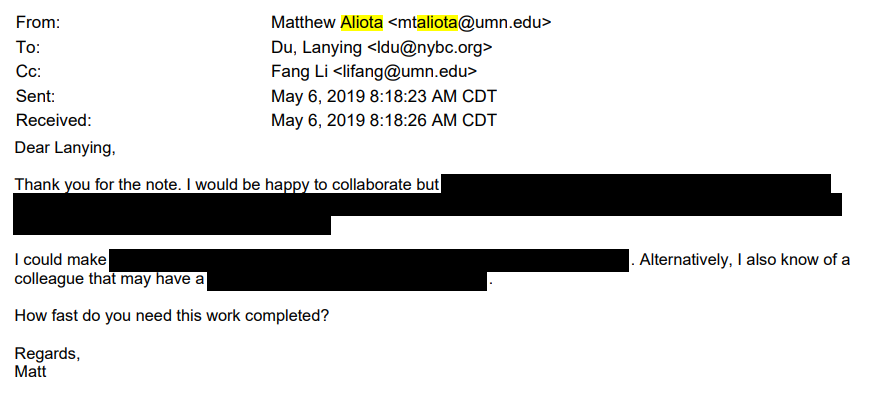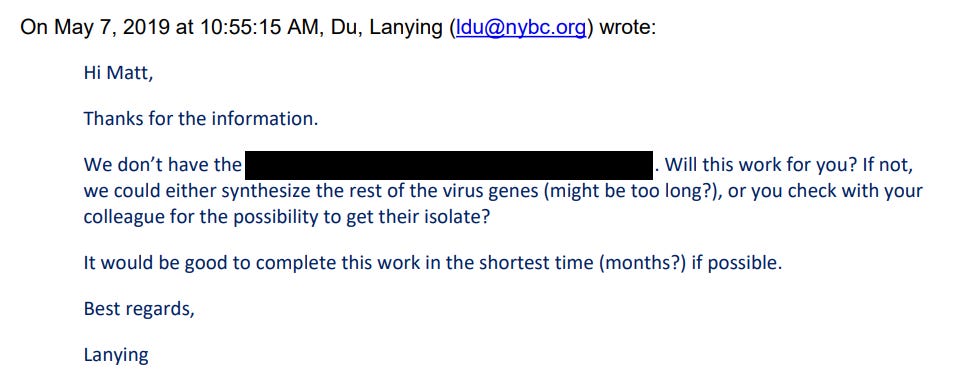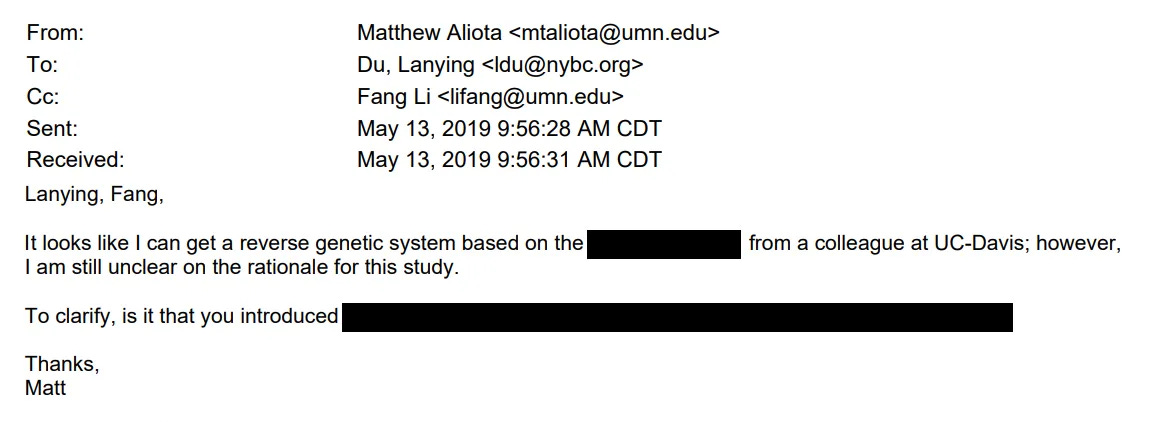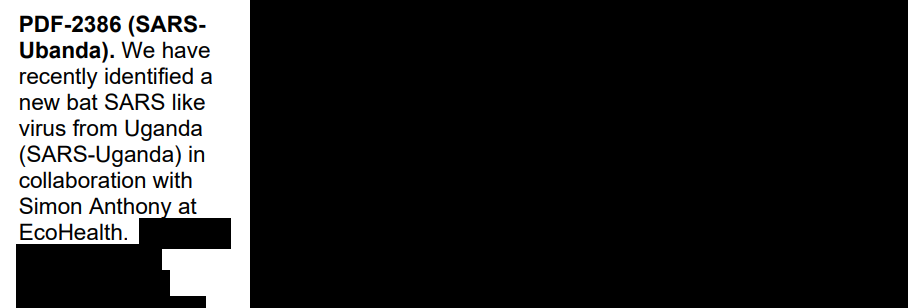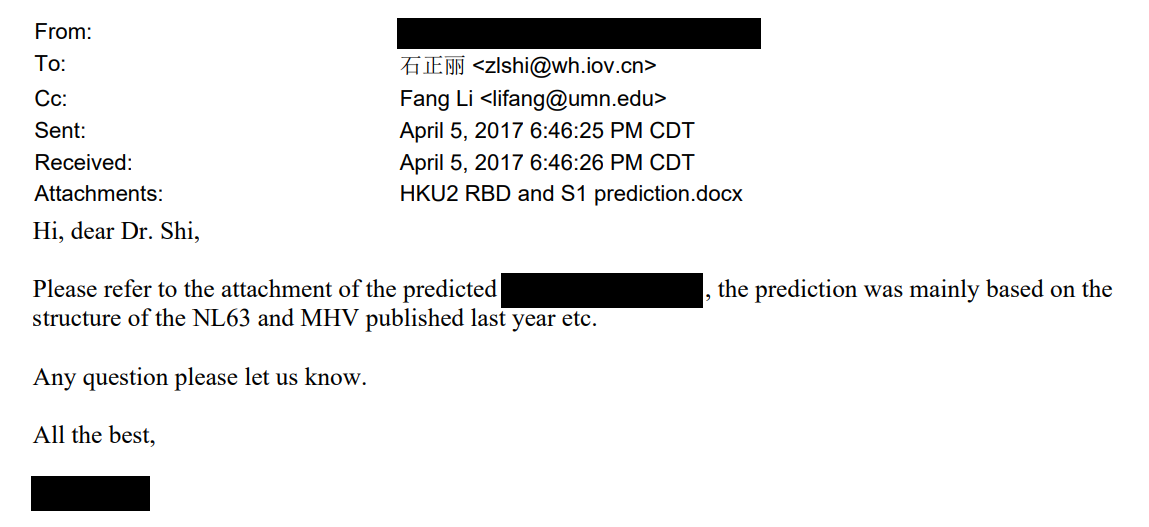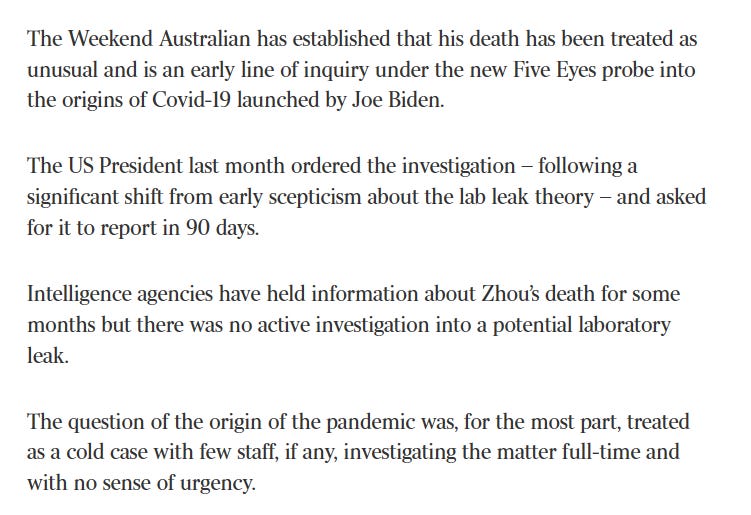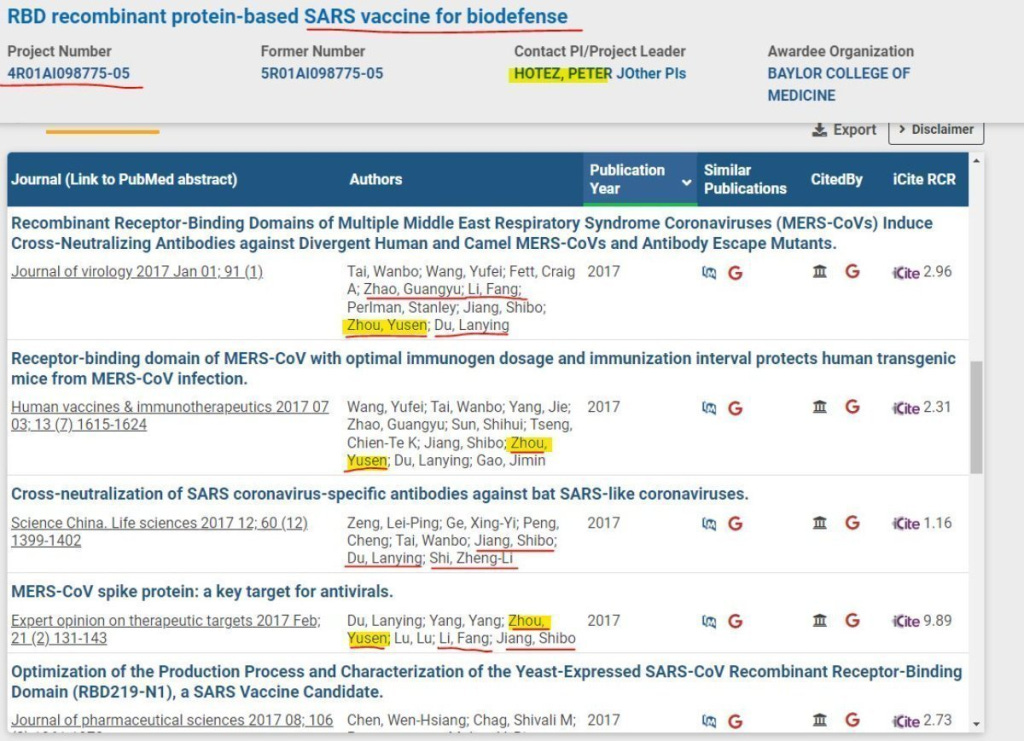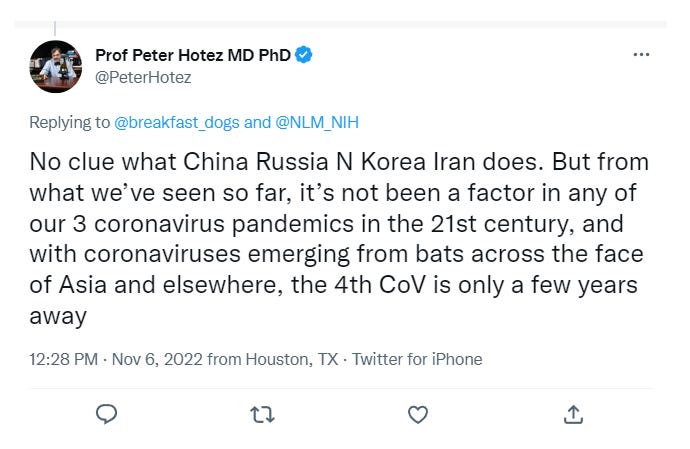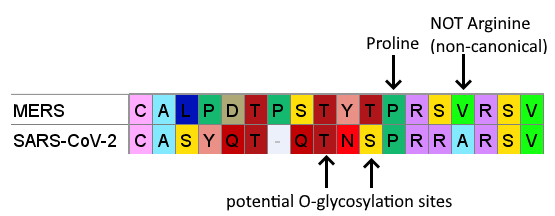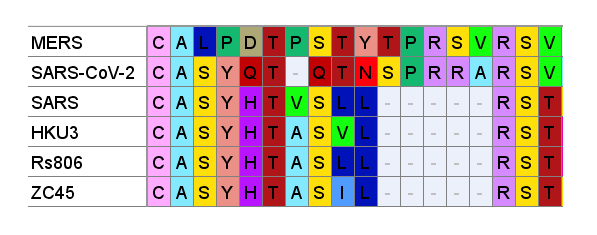The Furin Cleavage Site Part 1: Nexus
The FCS has been the standout feature of the SARS-CoV-2 both in its awkward protrusion from a previously conserved part of the spike sequence, and in the controversy and discussion it has raised.
Several theories have been proposed to explain its precise composition:
An unconnected sequence from a bat virus - HKU9
A sequence from a 2017 Moderna patent
Human α-ENaC
An FCS identical to a Feline Peritonitis strain
A patent for a SARS vaccine
There is interesting background, and some merit to all of these, but they have in common that they seek an external source of the exact nucleotide sequence for the insert. But it isn't necessary to find an exact match in literature or a database, however appealing its simplicity. It's likely that the FCS came about through experimentation and an exact sequence or the rationale for it was never previously documented publicly.
Of most significance to me is the last paper that was submitted for publication by a team including US, Chinese, civilian and military researchers immediately prior to the pandemic: “Molecular Mechanism for Antibody-Dependent Enhancement of Coronavirus Entry”. Experiments in this paper include introducing mutations to the furin cleavage site of MERS. While the experiments described in the paper are "loss of function" in that they disable, rather than add an FCS, they demonstrate where a focus of the team's research was, as do the references listed in the article. The connection to MERS complements the other unexpected homology I've recently discovered (published on this site as "Uncanny Inserts in the N-Terminal Domain").
But most intriguing of all is the back-story. Most public and media attention has been on the collaborations between Wuhan Institute of Virology and EcoHealth Alliance, but here is another nexus of US/Chinese collaboration that deserves more attention.
A Marriage of Convenience
The "Molecular Mechanism" paper brings together researchers from:
University of Minnesota (UMN) (senior author Fang Li)
The PLA’s Academy of Military Medical Sciences' a.k.a. Beijing Institute of Microbiology and Epidemiology or State Key Lab of Pathogen and Biosecurity (AMMS) (senior author Yusen Zhou)
New York Blood Center (NYBC) (senior author Lanying Du)
Wuhan Institute of Virology (WIV) (senior author Zhengli Shi).
Why is New York Blood Center 's Lindsay F Kimball Research Institute (NYBC) involved in a research project with the PLA's Academy of Military Medical Sciences (AMMS)? The proximal reason is that NYBC's Lanying Du was married to now deceased AMMS Professor and PLA General Yusen Zhou, and they had also been involved in many research collaborations over the years. But there is a longer history to this partnership.
Between 2005-07 Lanying Du was based at Hong Kong University’s Department of Microbiology where she completed her PhD thesis on the function of the SARS spike protein. But her relationship with Yusen Zhou began earlier, likely in Beijing, as the dedication on her PhD thesis suggests:
Her supervisor at HKU was Bo-Jian Zheng who, with Guan Yi, had led the effort to prove that civet cats were the proximal cause of SARS via a zoonotic spillover in a Guangdong market (there have been doubts over that theory almost from the start). Zheng and Yi worked closely with mainland institutions on the project, and they began to move into the orbit of the PRC state. In 2005 their HKU Microbiology lab was named the State Key Laboratory for Emerging Infectious Diseases, the first lab to be designated such outside mainland China. They began to receive direct funding of USD$5m/year from the PRC government, allowing a major expansion. In 2006, Bo-Jian Zheng became a guest professor at AMMS.
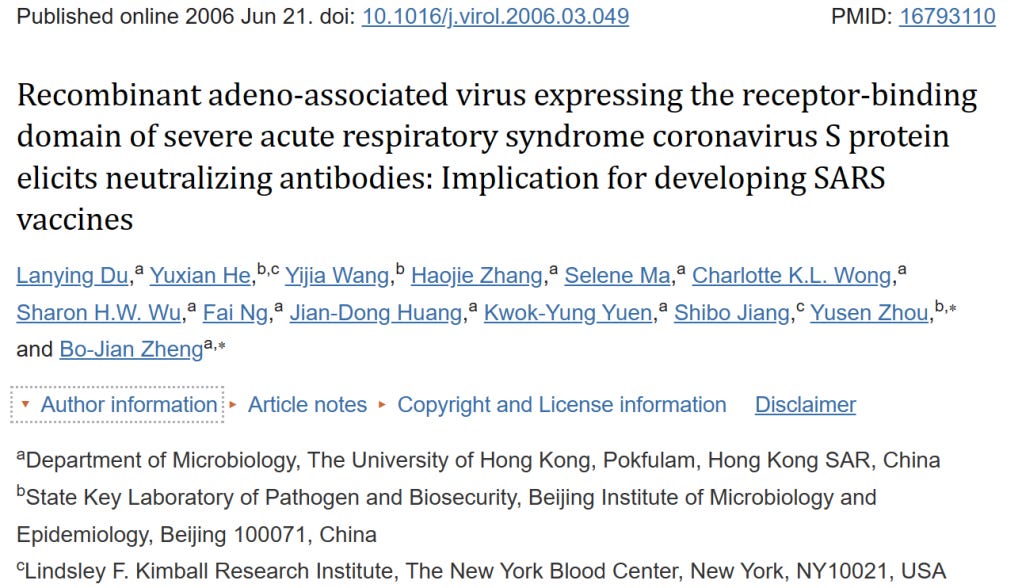
Lanying Du appears on at least one paper with an AMMS affiliation of her own, it's not clear what her military background is prior to this.
Lanying Du and Yusen Zhou collaborated frequently with Shibo Jiang, who was then based at the New York Blood Center. Jiang received funding from China's "973" program which sends Chinese scientists out into the world, to gain knowledge to advance China's strategic technological ambitions. Jiang occasionally also used a Fudan University affiliation.
In 2007 Lanying Du moved to NYBC, while continuing to author papers with her husband and others with AMMS affiliations. Another colleague Yuxian He states his affiliations as both AMMS and NYBC. Chinese military connections appear no barrier to employment at NYBC.
In 2013 Lanying Du and Shibo Jiang were involved in a paper in which a 12 nucleotide FCS (encoding RIRR) was inserted into a DNA sequence. The protein isn't viral, and the other authors are from a peripheral field. Perhaps this is what makes it interesting. Their role is largely as observers (Du is listed as editor) and suggests their interest in the genetic engineering techniques, rather than the specific clinical applications.

Fang Li’s undergraduate education was at Peking University and after graduating in 1996, he has studied and worked only in the US. Unlike Jiang he has never sported a Chinese institutional affiliation, or received funding from the 973 program. After post-doc at Harvard, he has been solely at University of Minnesota.
The first collaboration between Fang Li, Lanying Du, Shibo Jiang and Yusen Zhou is in 2014 when they produced 3 papers related to MERS. Ralph Baric from UNC is involved in one of these identifying DPP4 as MERS receptor. In another Chien-Te K. Tseng from UTMB's Center for Biodefense and Emerging Disease works alongside 6 AMMS researchers including Yusen Zhou.
In 2015 a team which included Zhengli Shi, but without Yusen Zhou, published a paper in which they introduced two mutations into the MERS related bat virus HKU4. They conclude these would be sufficient to allow it to transmit to humans. One of these mutations (S746R) creates an FCS in HKU4 in the same S1/S2 position. It is similar to MERS in that it is non-canonical i.e. it contains the minimum R-X-X-R motif an FCS needs (where X is any amino acid), but not the more optimal R-X-R-R which has an additional R in the third position. SARS-CoV-2's FCS (R-R-A-R) is also non-canonical. Though it contains 3 Rs, it has one in the second, not third position.
Fang Li Emails
We get a glimpse of the working relationships from some of Fang Li's emails obtained under FOIA by US Right To Know. It's difficult to say if these exchanges are directly relevant to the origin of SARS-CoV-2, as much has been redacted, but they suggest a pathway that intellectual property and possibly viral samples and isolates may have been transmitted from US institutions to the AMMS.
In one exchange Fang Li has apparently recently introduced Lanying Du to Matthew Aliota, also at UMN. A few days after making contact she asks him for a reverse genetic system that would allow her to construct a synthetic Zika virus clone. I don't wish to suggest this is a case of espionage, but it illustrates the ready availability of US intellectual property to someone who has strong PLA connections.
Ralph Baric and Fang Li in 2017 collaborated on (among other things) making a synthetic clone and chimera based on a Ugandan SARS-like coronavirus (PDF2386). Interestingly, SARS-CoV-2 has a mutation in the Envelope gene that was seen previously in African SL-CoVs, but never before in Chinese SL-CoVs (with the notable exception of ZC45/ZXC21). But again, much that might be interesting has been redacted.
Baric and Fang Li appear to enjoy working together.
Here an unidentified graduate student of Fang Li’s assists Zhengli Shi with predicting the 3D structure of the RBD of HKU2. The reference to NL63 is interesting.
It was Fang Li’s team who previously determined the 3D structure of NL63 binding to ACE2. Curiously SARS-CoV-2 has an NTD site which looks very similar to a region of the NL63 Receptor Binding Motif. I explore this in more detail in "Uncanny inserts in the N-Terminal Domain".
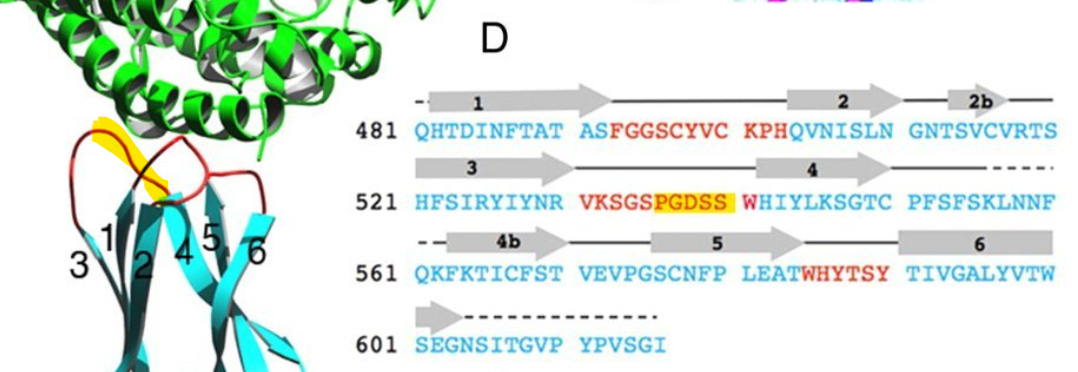
A NIAID grant to Lanying Du for her most recent coronavirus project suggests NIH are aware, and allow that research may be conducted on-site at the AMMS microbiology lab in Beijing. WIV is however not mentioned.
Interestingly, the abstract from this grant application states:
"Second, we will construct chimeric RBDs containing the core subdomain from one coronavirus RBD as the structural scaffold and the RBM from another coronavirus RBD as the immunogenic sites".
This sounds very similar to the structural engineering I describe in "Uncanny inserts in the N-Terminal Domain". The core structural scaffold in this case is largely residues from MERS, while the immunogenic sites come from NL63, SARS and ZC45. And although the structure is located in the NTD, rather than the RBD it likely has similar function.
The Mysterious Death of Yusen Zhou
Yusen Zhou died in May 2020, aged 54, reportedly of a heart attack. Journalist Sharri Markson reported via an IC source that:
Unfortunately nearly two years after Markson's story, none of this information has been released. After his death Lanying Du continues to work at NYBC and gain new NIAIAD funded contracts.
Peter Hotez' Denial
Peter Hotez was the Principal Investigator on a long running program "RBD recombinant protein-based SARS vaccine for biodefense". Funding commenced in 2012, and was still being extended in 2020. Hotez often subcontracted Lanying Du, Shibo Jiang and also Yusen Zhou - despite the project being related to biodefense, and Zhou belonging to a foreign military.
I managed to "interview" Hotez briefly on Twitter before he blocked me.
On Lanying Du he said:
It's not clear if she's a US citizen, and/or whether she is permanently based in the US, or even whether she might be a PLA officer like her deceased husband. Asked about Yusen Zhou's death:
That would seem a blatant lie considering Zhou is named on his project, involved in 5 publications, and is the husband of someone he admits to have known for many years and written several papers with.
I pointed out to him that AMMS had been suspected by US State Department of being involved in clandestine bioweapons development in breach of international conventions, isn't that a concern for him in his role? His flabbergasting response: "no clue what China does".
I asked him if he thought he should be across potential bioweapons development and dual-use potential if he's leading biodefense projects?
Hotez is now promoting his new book about the "Rise of Anti-Science". If there's been a loss of confidence in science, perhaps he should reflect on his contribution to that.
The FCS: MERS Homology
I will look at the molecular biology of the FCS in much more detail in the next article. That will cover advanced topics like flanking residues, restriction sites, glycosylation sites, codon choice, the structural biology behind the "Molecular Mechanisms" paper. Also I will debunk a few sequences that purport to show path of natural evolution of the FCS.
For now I just want to point out three key features that make it similar to MERS, and unlike most other known cleavage sites.
The presence of Proline in same relative position.
The absence of an Arginine (R) at P2, making it non-canonical.
A similar pattern of potential O-glycosylation sites (S or T) close to the Proline residue (proximity to Proline enhances glycosylation potential).
And there is nothing even close among SARS-like viruses.
For more interesting connections between SARS-CoV-2 and MERS please see my article "Mysterious Inserts in the N-Terminal Domain".


